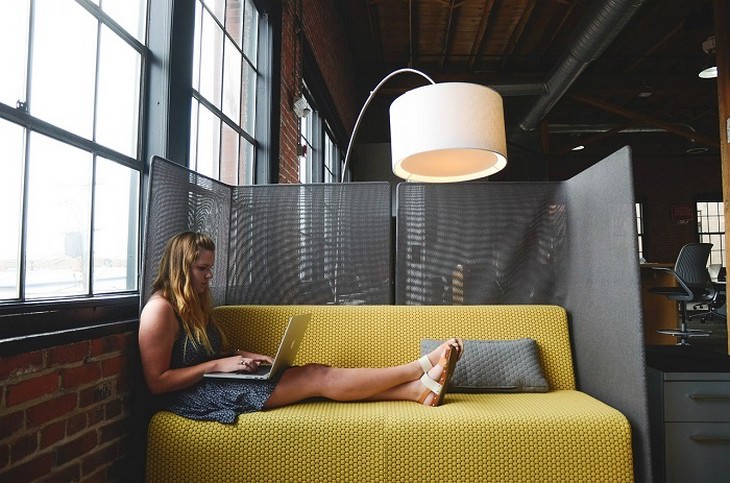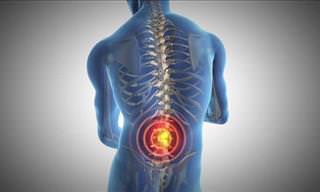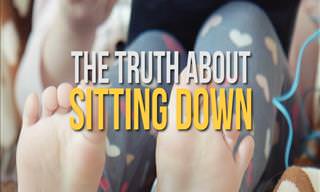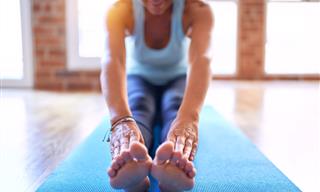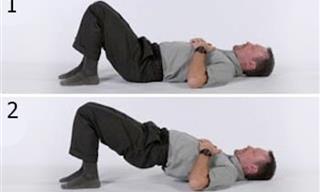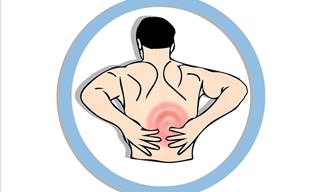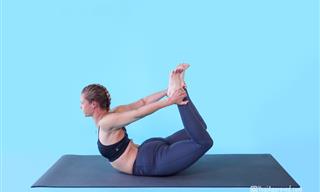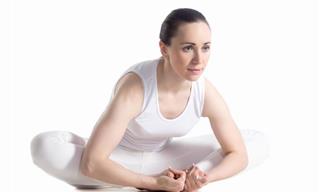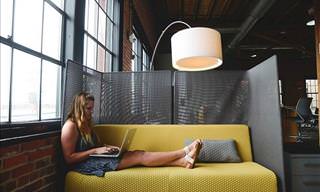Most of us spend a good deal of our time sitting in front of the computer at work, sitting at the table during lunch or sitting in front of the television in the living room at the end of the day. Although this is an act whose goal is to ease our body and make us feel better, many of the common sitting positions we choose don’t benefit us in the short term and cause long-term health damage. In the following sections, you can learn about the 6 common sitting positions that many of us choose throughout the day, the damage they can cause to our bodies, and how to prevent or treat them.
1. Cross-legged
Sitting cross-legged is a comfortable and common position that many of us like to sit in, but despite the convenience, it can lead to a variety of health problems that should be avoided. In studies that examined the association between blood pressure levels and our sitting habits, it was found that cross-legged sitting could temporarily increase systolic blood pressure by 7% and diastolic blood pressure by 2%. At the same time, many therapists and physiotherapists say that crossing legs often can lead to back and neck pain and even to disc herniation. This is due to the deformity created by the thighs when placed on top of each other, which can lead to an imbalance in the pelvis, increased pressure on the spine, and pain.

Beyond the orthopedic problem, sitting cross-legged for a long time can cause damage to the ligament that stretches between our lower back and our legs, which can damage your nerves over time. The last drawback is related to the thickening of spider veins. The pressure exerted on the legs during the session inhibits the flow of blood, leading to the blood being collected in a certain area of the veins and causing the appearance or exacerbation of the existing varicose veins.
Solutions:
- Limit sitting time - even if you can’t completely stop sitting cross-legged, limit yourself to being in this position for no more than 10-15 minutes. Be sure to get up and walk for a minute or at least a few seconds after sitting. Since prolonged standing can also damage the blood flow to the legs, avoid standing for a long period of time, and be sure to walk or shake your legs while standing.
- Adjust the chair - try to get a chair that gives you adequate back support. This is because our desire to sit in this position sometimes arises unconsciously from our attempt to relieve stress or pain that we feel in our lower back.
- Avoid tight clothing - tight clothing can affect blood flow in certain areas and between the legs, and the extra pressure applied to the legs while sitting in this position may increase the appearance of varicose veins in the legs.
2. Sitting with your back stooped when your knees and buttocks are at the same height
Many of us are familiar with the recommendation to sit with your back straight when your knees are ninety degrees off the floor. Indeed, a sitting position that provides good back support is one in which the knees and buttocks are at the same height. However, try to find the problem in the picture below:
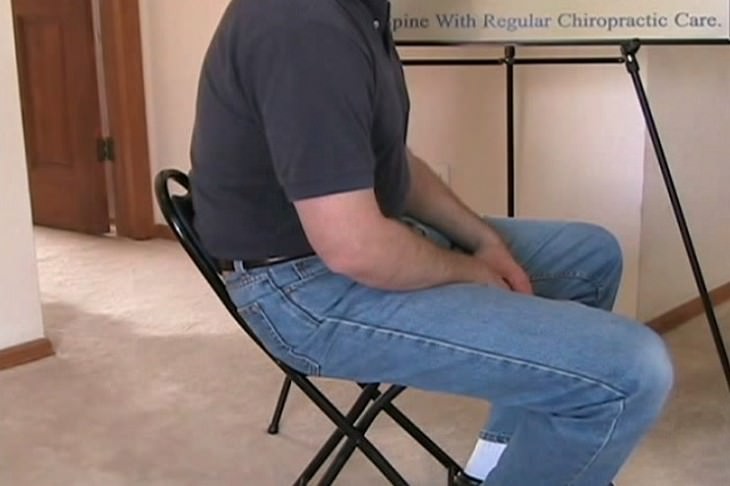
Although the photographed man is careful about the right angle of his legs as much as he can be, he forgets that in order to derive the benefit from this sitting position, it must be done in its entirety, and not just a part of it. Many who suffer from back pain, or whose back muscles are weak and unable to provide proper support, reach a position where the lower back fails in its efforts to keep the back straight, and curls forward instead of staying straight.
As a result, the shoulders also curve forward, followed by the neck and head. Prolonged sitting in a position where the back crouches or curls forward, while the knees and buttocks are left at a 90-degree angle, may cause lower back and neck pain, stiffness in the shoulder area and even headaches.
Solutions:
- If you feel that you can’t keep your back straight for a long time, try to be aware of the moment you begin to curl your back and avoid placing your legs and knees at 90 degrees from the floor. Instead, move the feet back to reach the position where the knees will be at a 45-degree angle to the floor, and not parallel to it. As in the following picture:
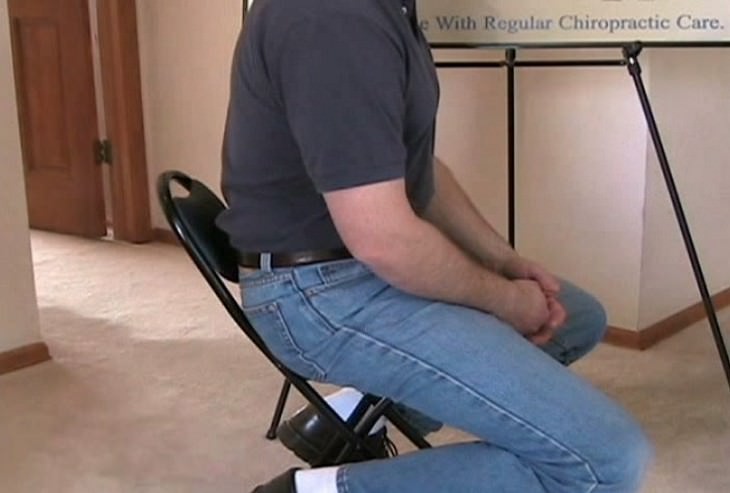
- The result is that the waist will be higher than the knees, which will enable the lower back to return to an upright posture more easily, reduce the strain and pressure on it, and lift the shoulders and prevent pain.
- At the same time, it is also important to strengthen your back muscles so that you can eventually sit in the best position.
3. Leaning forward while sitting in front of a computer
Many of us spend a good deal of time sitting in front of a computer, either at work or at home, leading to us leaning forward to get close to the screen or to stabilize ourselves as we help our muscles rest. All these lead to us ending the day with a variety of problems, including shoulder pain, neck and head pain, knee pain and, of course, lower back pain.
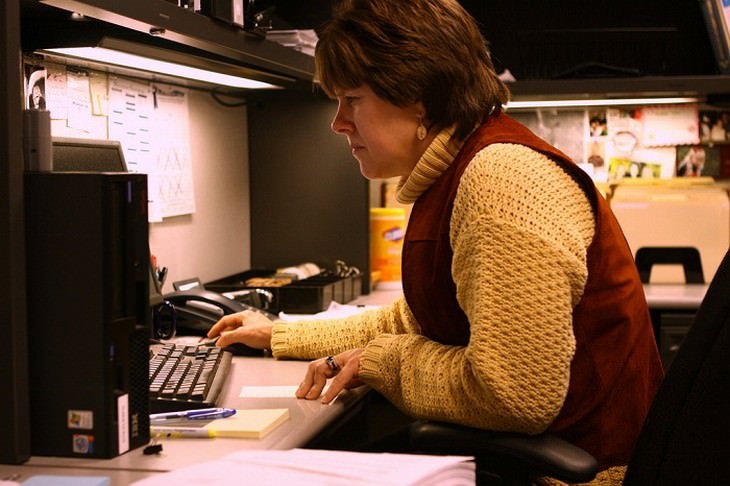
Solutions:
-
Remind yourself of the correct rules of sitting - although we all know that it is important to sit with your back straight, this is actually a matter of many other factors such as the height of the screen, computer keyboard, chair and so on. The following video will remind you how to correct the common mistakes that cause us all to lean forward and harm our health.
- Perform muscle strengthening exercises - strengthening the muscles responsible for stabilizing the body during sitting is something that must be done in order to be able to return from sitting bent to a healthy and normal sitting position.
- Avoid leaning forward while doing other actions throughout the day - one of the reasons for us lean forward during sitting is our habit of doing it throughout the day even when we aren’t sitting. Be sure to avoid bending forward when lifting objects from the floor, for example. Instead of bending, spread your legs slightly and bend your knees instead of your back.
4. "Half-lying" posture
The equivalent of leaning forward is the opposite - leaning back. Most of us sit like this on the couch in front of the television, but sometimes we do it either at work or when playing on the computer. When we feel pain in the back, especially in the lower back, our tendency is to move to a position that will strain our muscles less, and slack sitting allows us to move some of the load onto other parts of the back.

However, by moving to this slack position, we convert part of the muscle load onto our bones, tendons, and even nerves. These parts are not supposed to carry the weight we lay onto them in the loose sitting position, so we may suffer from long-term and even immediate damage.
Solutions:
- Give your back muscles their responsibility back - Although leaning back seems to be a convenient and useful thing, this is very harmful. The solution here, too, is to train the weak muscles of the back, which when strengthened will be able to carry the weight of our bodies during sitting without a problem.
- Adjust the seat – give up the chair with too soft a backrest or one that allows a backward tilt, and instead choose a chair that won’t allow you to sit in such a way. If there is still space between your lower back and the seat, fill it with a small cushion or rolled shirt that will support your spine throughout the day.
- Stretch Training - Along with regular exercising, be sure to maintain a routine of flexibility training and stretching for the back. Click here to get to know 4 yoga stretches that will help you get rid of back pain, strengthen your muscles and return more easily to a proper sitting position.
5. Resting in a squatted position
Knees are a vulnerable and sensitive area, and sitting positions that apply prolonged pressure on your knees such as leaning or squatting on the knee joint are responsible for quite a few of the injuries and pains that many suffer from. The most common injury caused by strenuous sitting is associated with an infection in the Patella (Infrapatellar bursitis), which is located on the front of the knee.
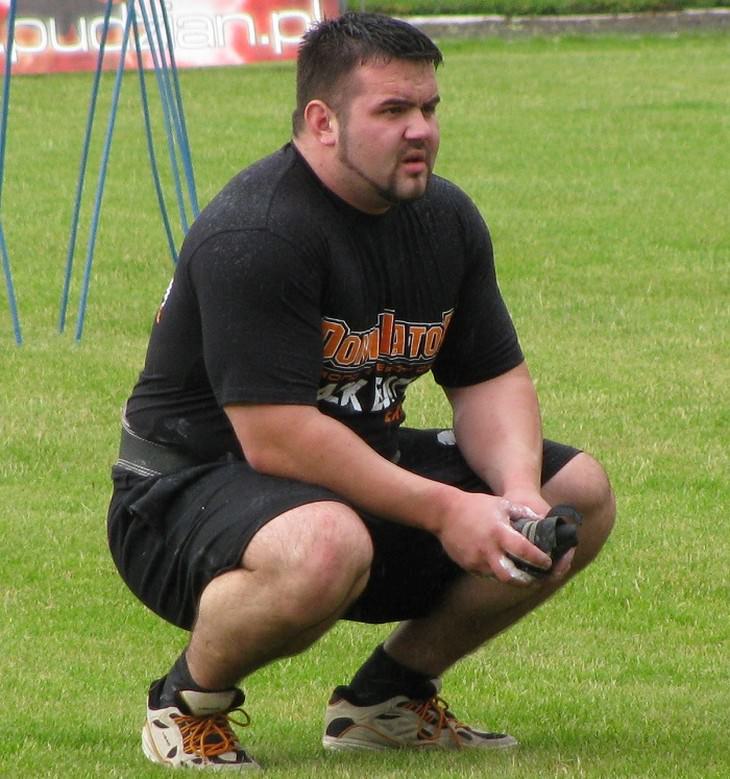
Today many complain of pain in the area after cleaning or gardening, but also due to physical activities during work. Because the joint is responsible for a wide variety of activities, its injury can lead to pain when ascending or descending the stairs, running, moving from sitting to standing and even waking up in the middle of the night when changing sleeping positions.
Solutions:
- The most important thing you have to do is avoid being in this position as much as possible. If you clean or work on low surfaces, bring a small stool with you so you don’t have to kneel. If this isn’t possible, be sure to get up every 10 minutes and straighten your legs, even if only for a few seconds.
- If you find it difficult to sleep at night because of pain, it means that you are probably suffering from Infrapatellar bursitis. Sleep with a pillow between your legs to reduce contact between the knee and hard surfaces such as the mattress or the opposite leg, thus reducing the chance of waking up.
- Be sure to perform exercises and stretching that will keep your knees flexible and minimize the risk of recurring injuries or worsening of existing conditions. Click here to learn some useful exercises and stretching for alleviating knee pain.
6. Lotus position
Indian style sitting is a favorite form of sitting for many, and it is also the form of the initial sitting position in yoga classes, and not by accident. It has attributes of calmness, balance, and peace. Some yoga students choose the lotus position, which is an oriental position where the feet lay on top of the thighs and not under them. 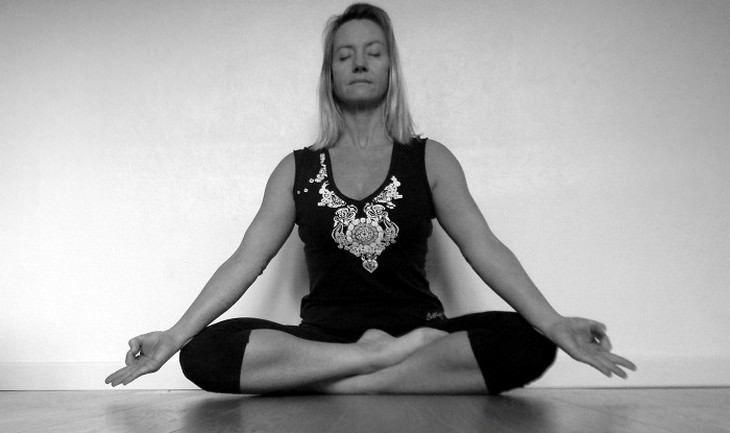
However, in order to gain the benefits of this position, one would need the flexibility of the hip joints and back muscle strength, which otherwise may collapse under the difficulty of this sitting position and lead to back pain, hip and ankle inflammation and especially long-term damage to the inner knees. At the same time, this sitting position also includes disadvantages due to it being an asymmetrical position, because one of the legs is placed on top of the other, which affects our pelvis and may later lead to changes in our entire posture.
Solutions:
- To avoid pressure on only one side of the body, be sure to change the position of the legs every few minutes so that both feet will be up and down evenly.
- If you have suffered from knee pain in the past, try not to remain in this position for a long time and avoid excessive bending of the knees. If you feel pressure or pain during sitting, immediately switch your posture, shake out your legs, and try to sit in a different position.
- To avoid discomfort or pain in the lower back, keep your knees low or in line with the hips. You can do this by sitting on a rolled towel or any other elevating surface. Also, keep your feet as far away from the pelvis as possible.
- Try to sit close to a wall that will allow you to keep your back straight and avoid bending or crouching of your back that might get tired.
image source: Alex, Kevin Teague, Artur Andrzej, Jemasty, Youtube
Related Articles:
1. The Benefits of Positioning Your Computer Correctly
2. Why Constantly Sitting Down Is Bad For You
3. 8 Exercises for a Better Sitting Posture
 Go to BabaMail
Go to BabaMail


